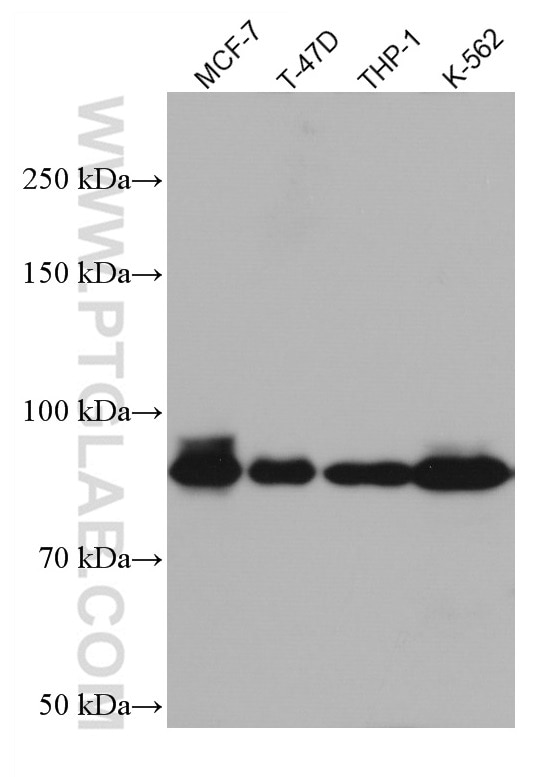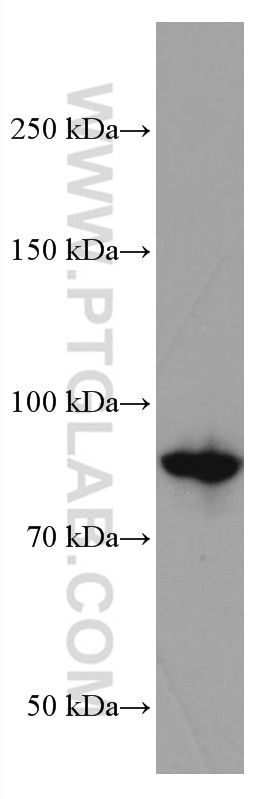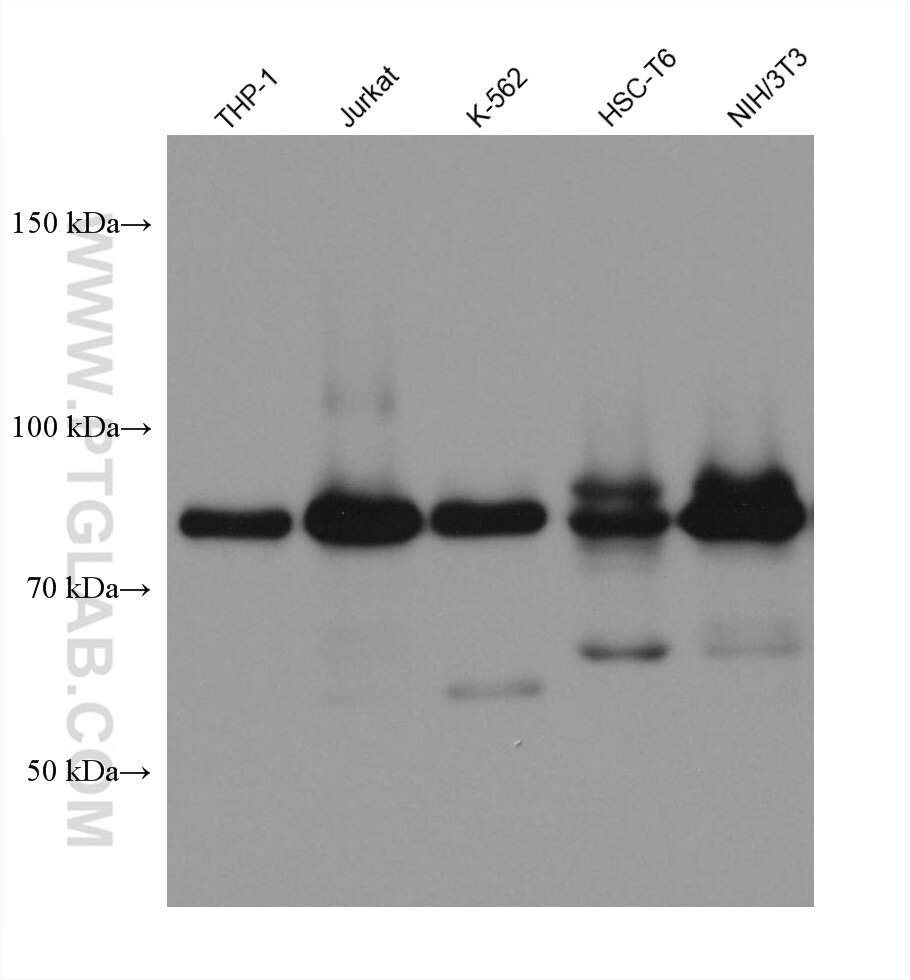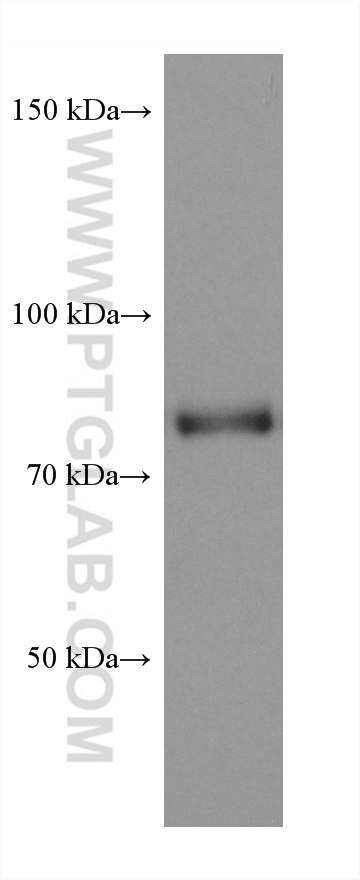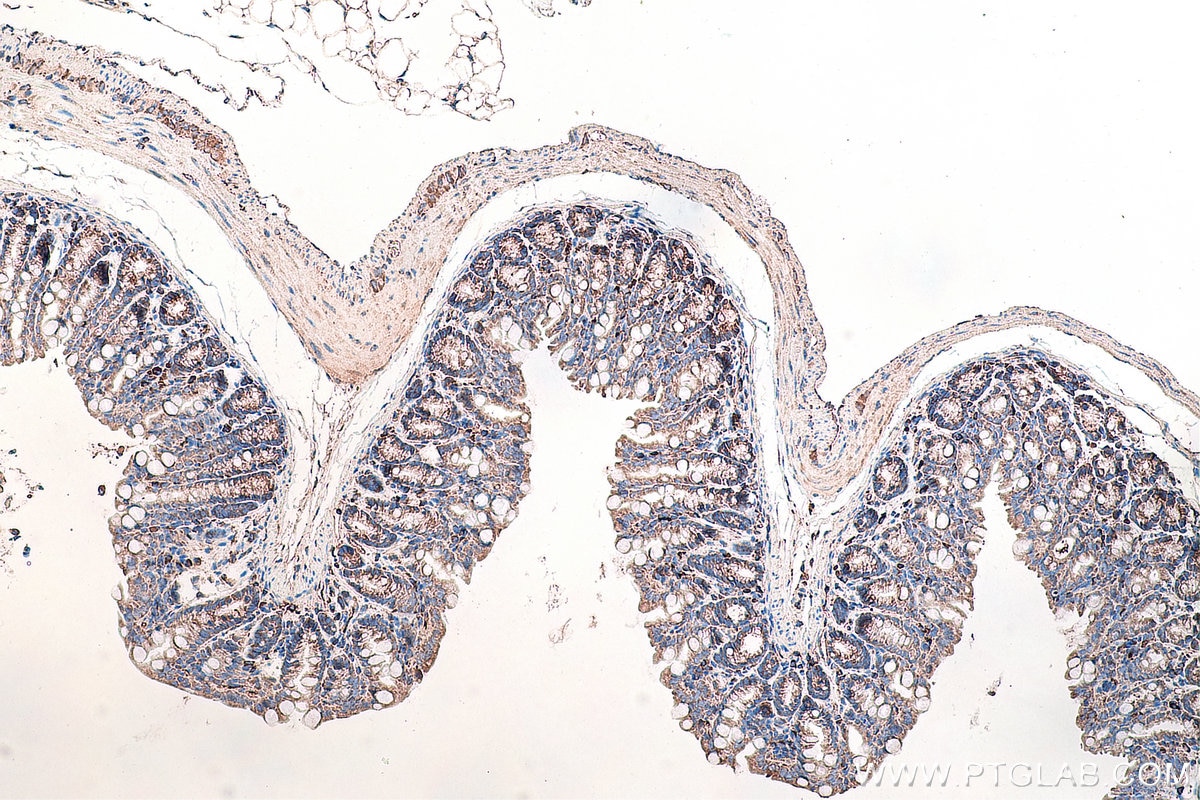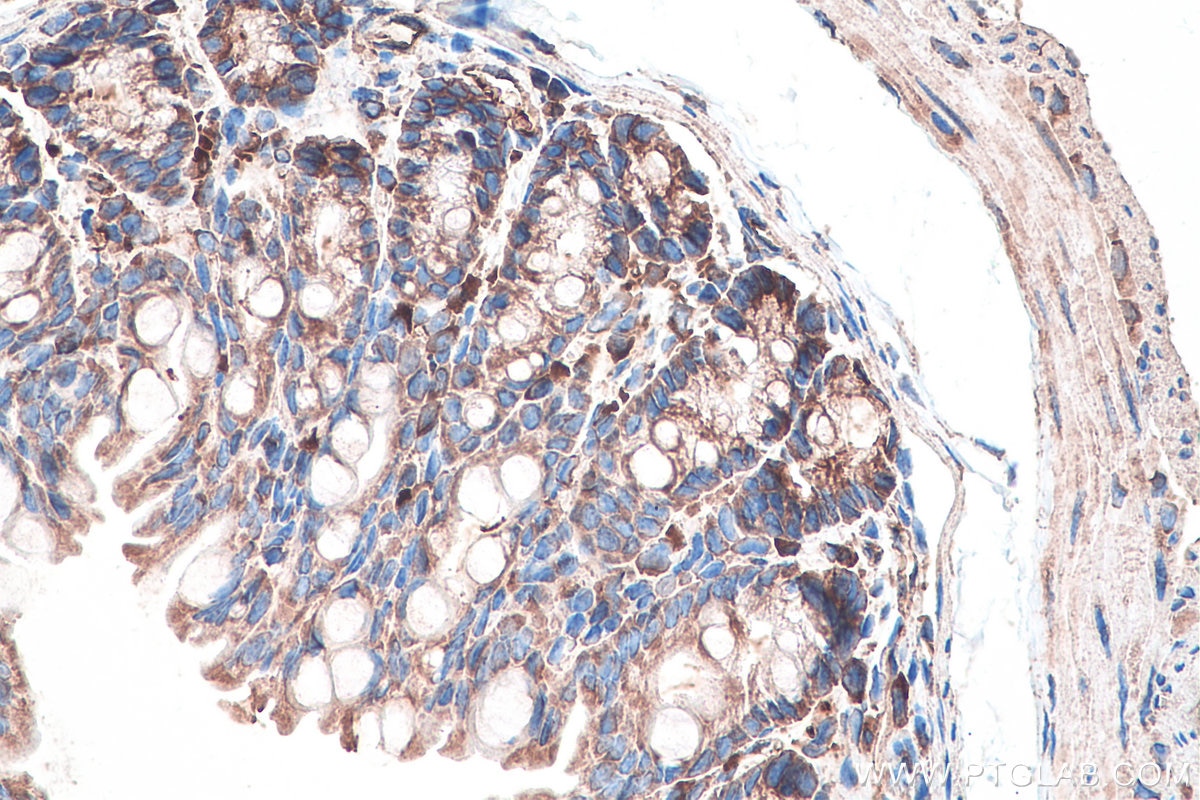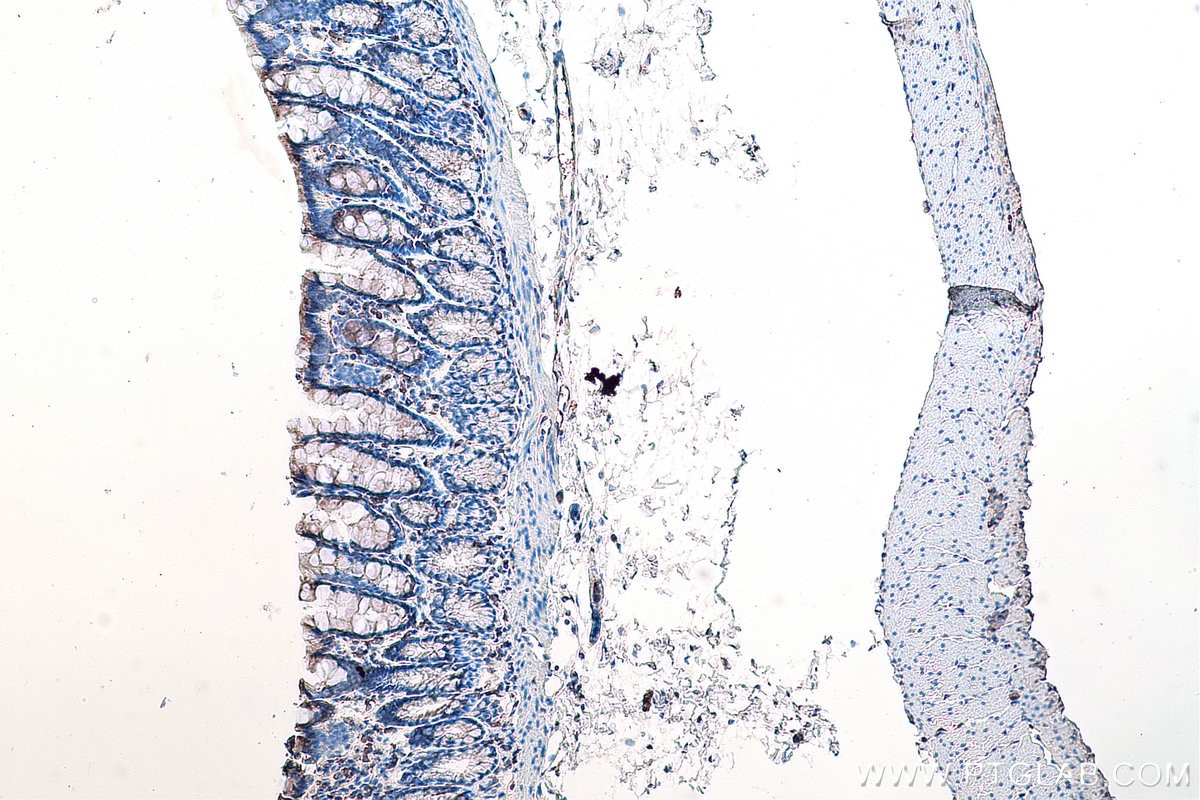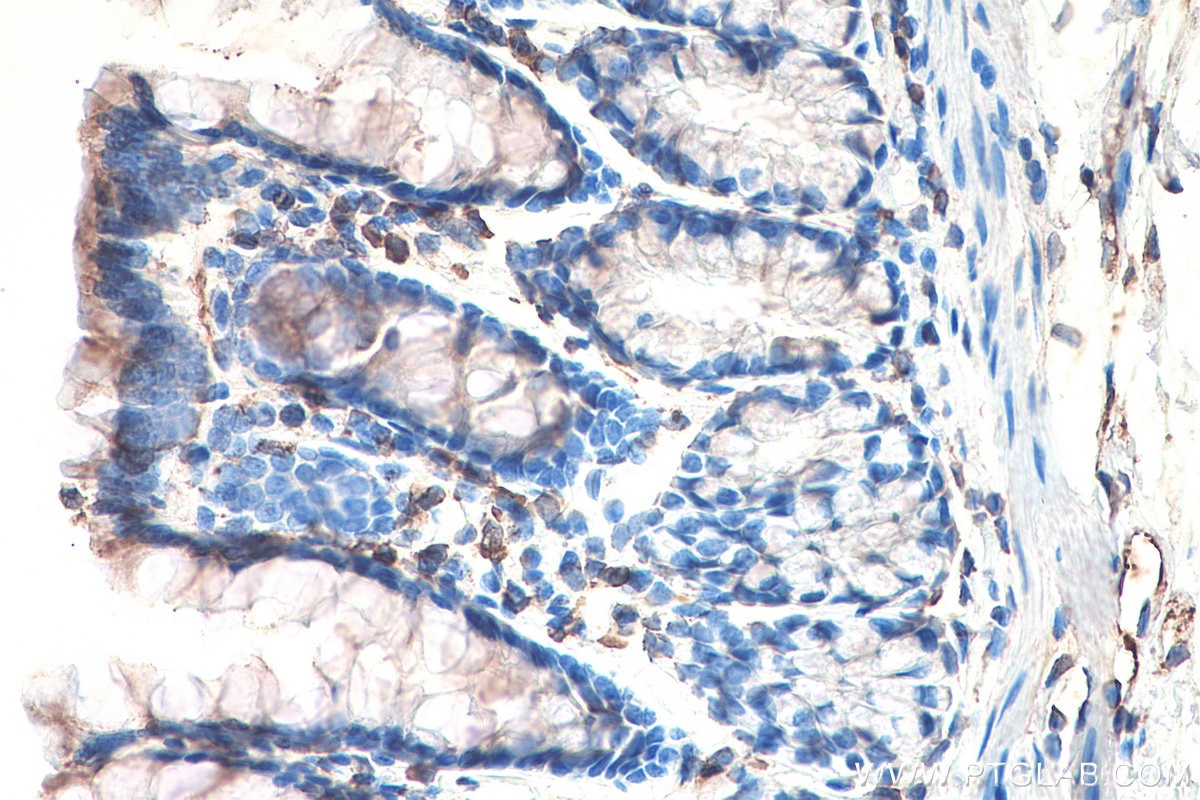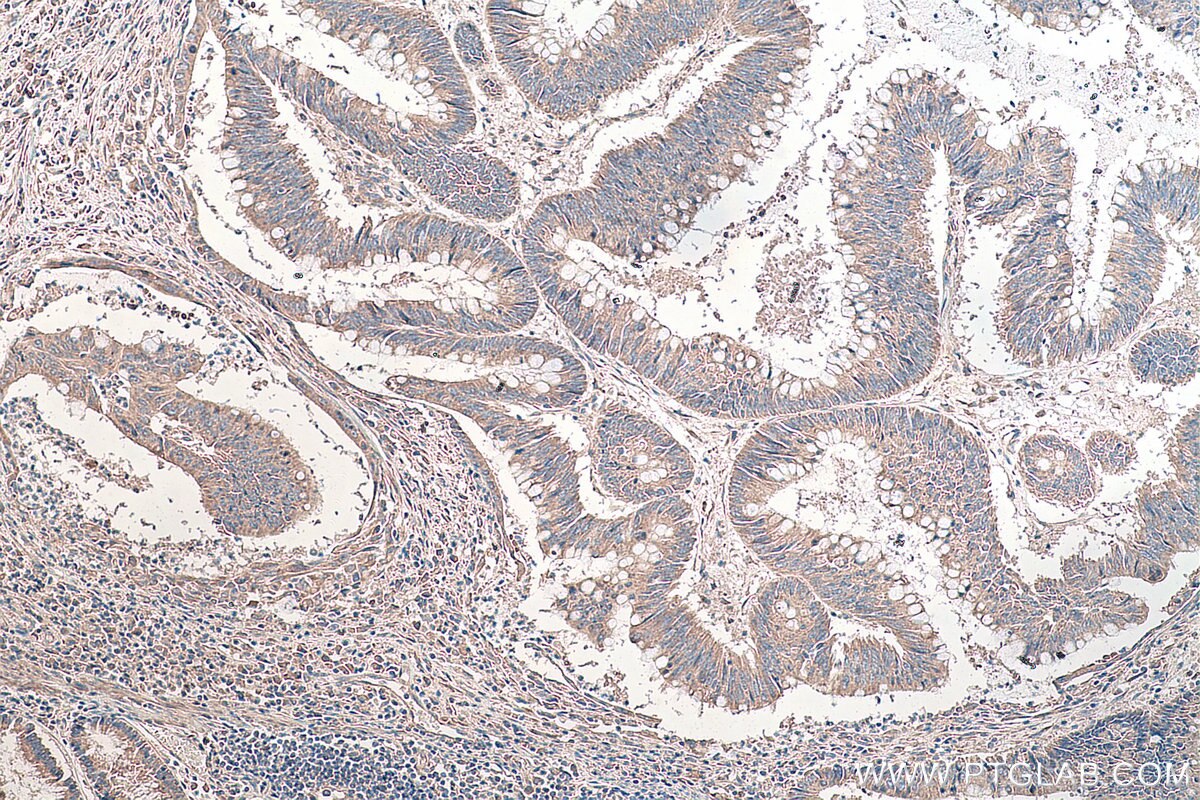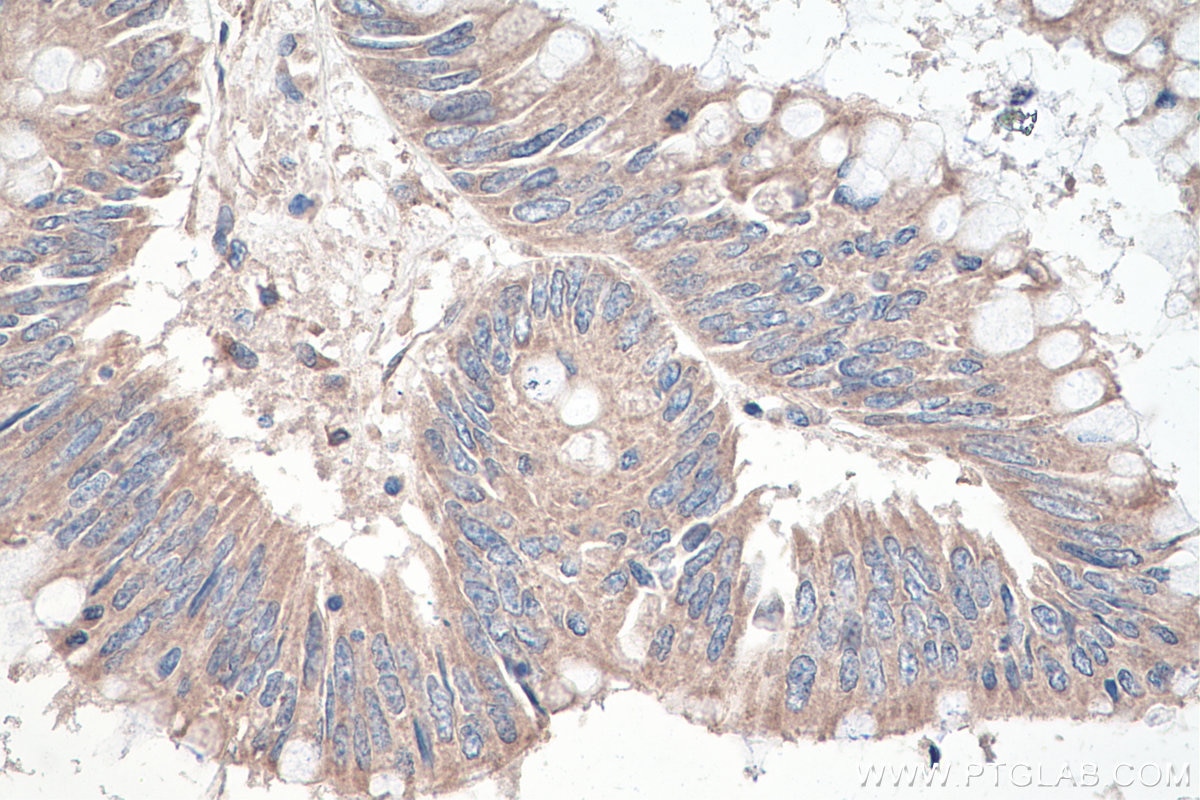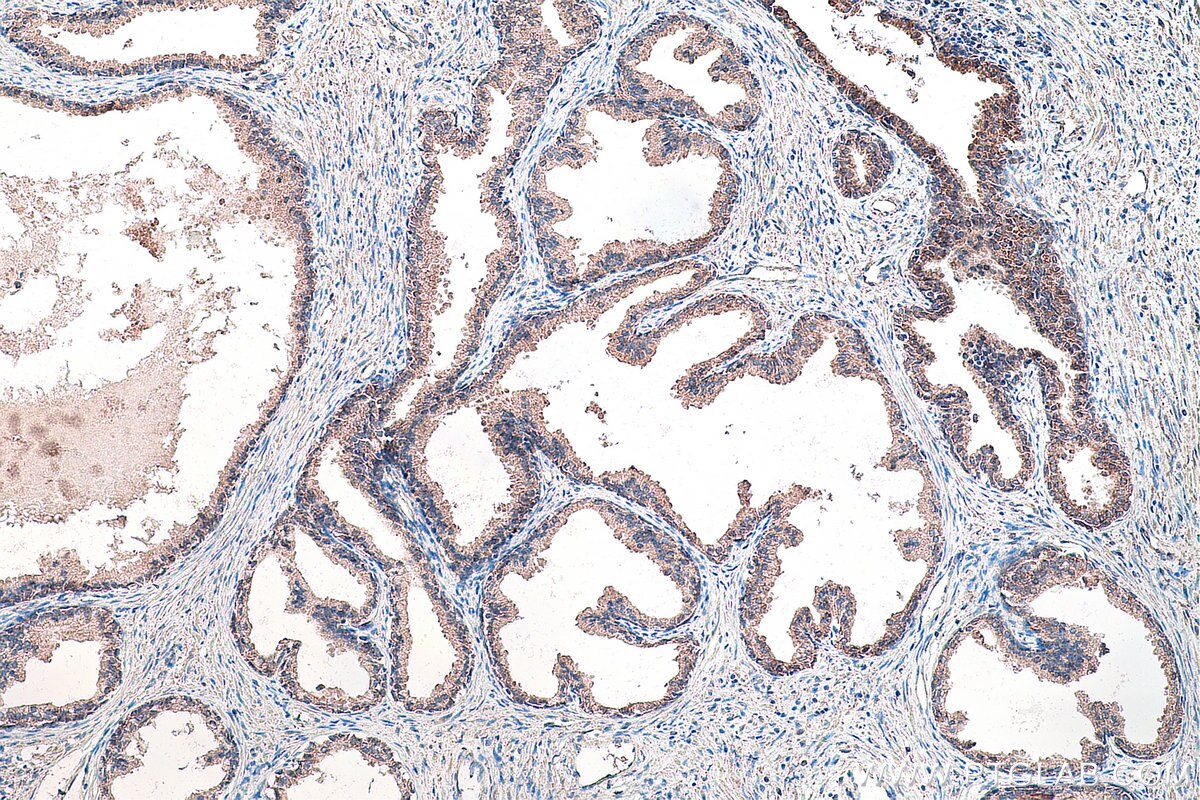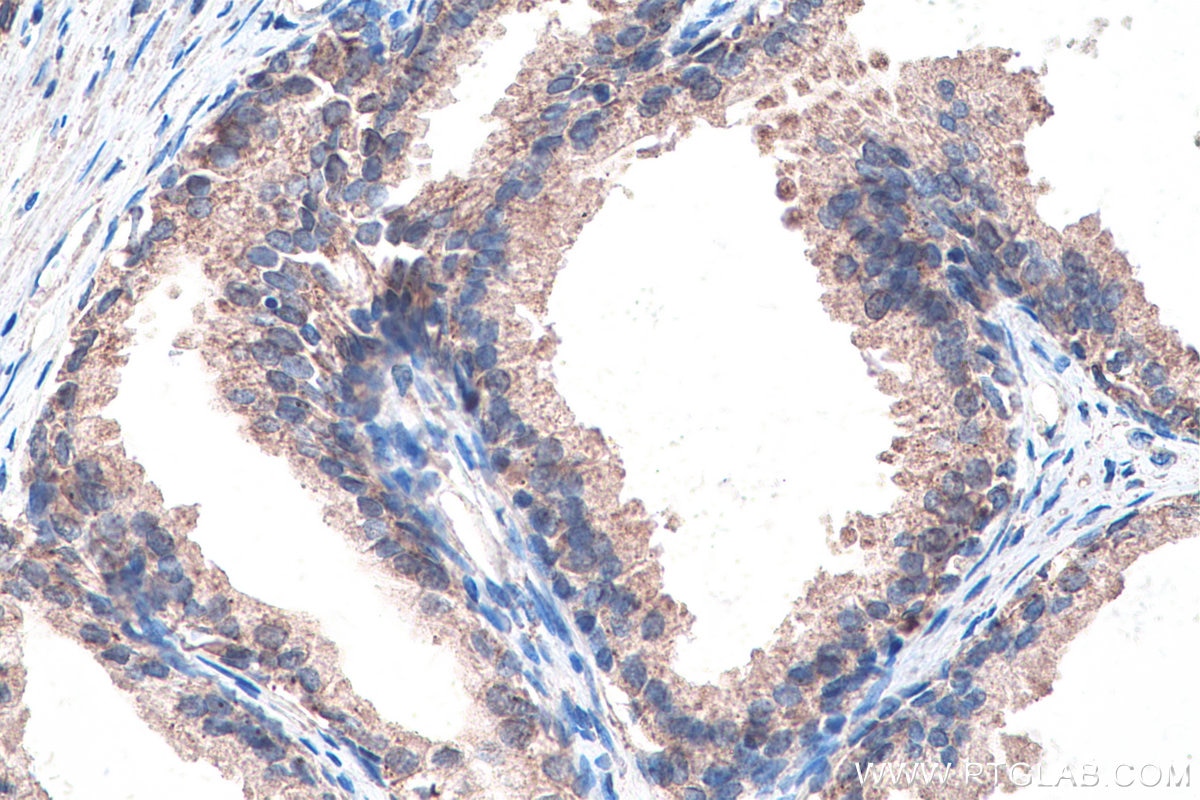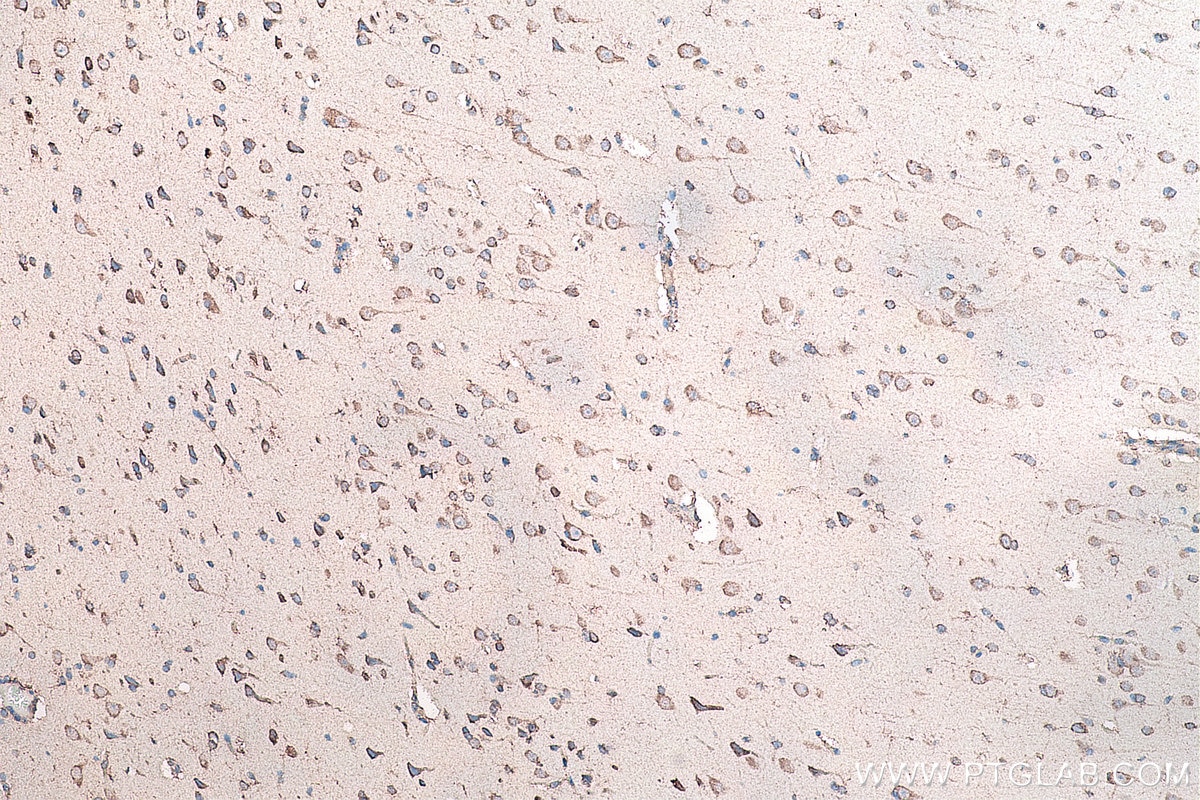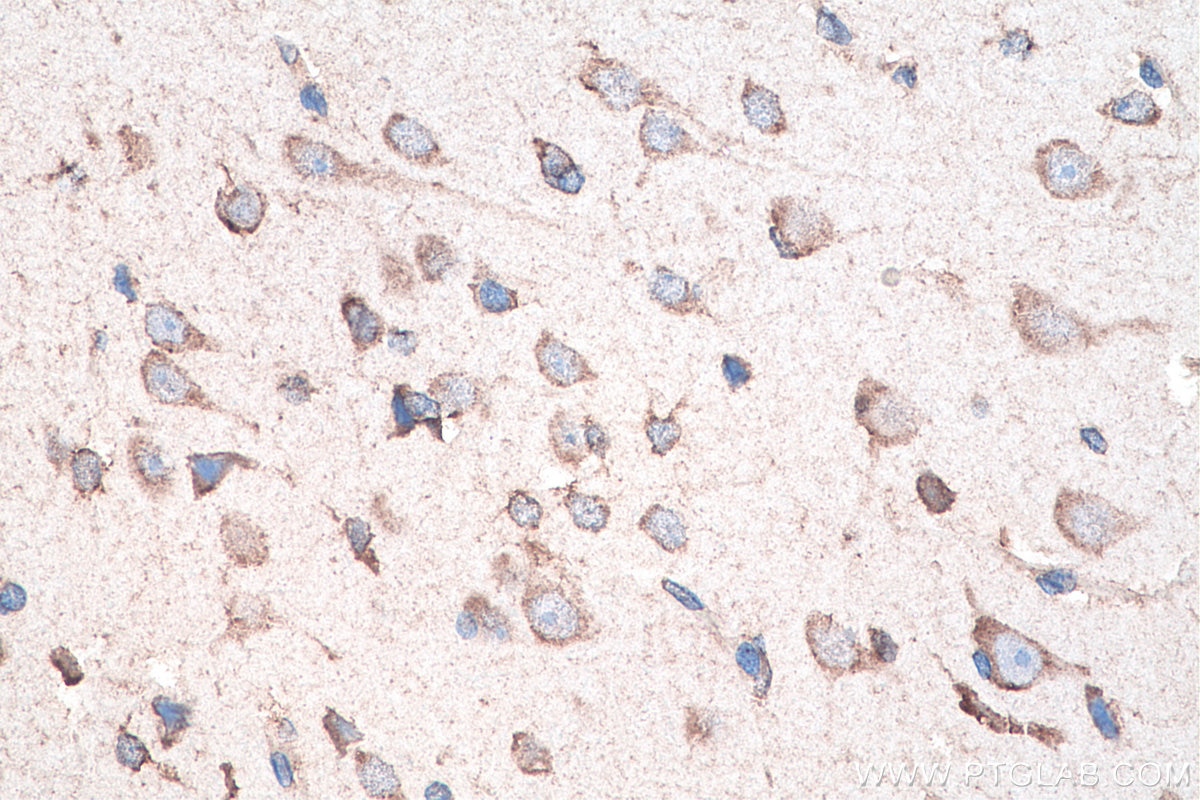DVL2 Monoklonaler Antikörper
DVL2 Monoklonal Antikörper für IHC, WB, ELISA
Wirt / Isotyp
Maus / IgG1
Getestete Reaktivität
human, Maus, Ratte
Anwendung
WB, IHC, ELISA
Konjugation
Unkonjugiert
CloneNo.
2F2D2
Kat-Nr. : 67105-1-Ig
Synonyme
Galerie der Validierungsdaten
Geprüfte Anwendungen
| Erfolgreiche Detektion in WB | MCF-7-Zellen, A431-Zellen, Jurkat-Zellen, K-562-Zellen, NIH/3T3-Zellen, T-47D-Zellen, THP-1-Zellen |
| Erfolgreiche Detektion in IHC | Maus-Kolongewebe, humanes Gliomgewebe, humanes Kolonkarzinomgewebe, humanes Prostatakarzinomgewebe, Ratten-Kolongewebe Hinweis: Antigendemaskierung mit TE-Puffer pH 9,0 empfohlen. (*) Wahlweise kann die Antigendemaskierung auch mit Citratpuffer pH 6,0 erfolgen. |
Empfohlene Verdünnung
| Anwendung | Verdünnung |
|---|---|
| Western Blot (WB) | WB : 1:1000-1:6000 |
| Immunhistochemie (IHC) | IHC : 1:2000-1:8000 |
| It is recommended that this reagent should be titrated in each testing system to obtain optimal results. | |
| Sample-dependent, check data in validation data gallery | |
Produktinformation
67105-1-Ig bindet in WB, IHC, ELISA DVL2 und zeigt Reaktivität mit human, Maus, Ratten
| Getestete Reaktivität | human, Maus, Ratte |
| Wirt / Isotyp | Maus / IgG1 |
| Klonalität | Monoklonal |
| Typ | Antikörper |
| Immunogen | DVL2 fusion protein Ag28634 |
| Vollständiger Name | dishevelled, dsh homolog 2 (Drosophila) |
| Berechnetes Molekulargewicht | 736 aa, 79 kDa |
| Beobachtetes Molekulargewicht | 90 kDa |
| GenBank-Zugangsnummer | BC014844 |
| Gene symbol | DVL2 |
| Gene ID (NCBI) | 1856 |
| Konjugation | Unkonjugiert |
| Form | Liquid |
| Reinigungsmethode | Protein-A-Reinigung |
| Lagerungspuffer | PBS mit 0.02% Natriumazid und 50% Glycerin pH 7.3. |
| Lagerungsbedingungen | Bei -20℃ lagern. Aliquotieren ist bei -20oC Lagerung nicht notwendig. 20ul Größen enthalten 0,1% BSA. |
Protokolle
| Produktspezifische Protokolle | |
|---|---|
| WB protocol for DVL2 antibody 67105-1-Ig | Protokoll herunterladen |
| IHC protocol for DVL2 antibody 67105-1-Ig | Protokoll herunterladen |
| Standard-Protokolle | |
|---|---|
| Klicken Sie hier, um unsere Standardprotokolle anzuzeigen |
